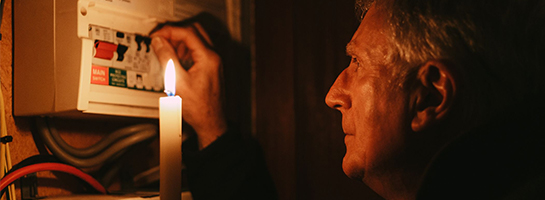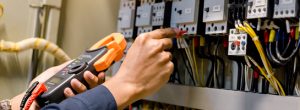Life can be unpredictable, and so can your home’s power supply. The lights are blazing one minute, then you are plunged into darkness. Power outages interrupt everyday activities, compromise safety, and cause needless stress in addition to being an annoyance. Being ready may really make all the difference. This is a handbook to help you be ready for the unplanned events.
Why Power Outages Happen
Power outages may result from several factors, such as bad weather conditions, mechanical failure, or accidents involving the power line. Knowing the frequent causes helps homeowners anticipate potential risks and prepare well. Certainly, no one can determine when an outage will take place, but knowledge of your area’s weather and utility updates would be a great start.
Impact of a Power Outage
A sudden loss of power can have effects beyond just lighting. Critical appliances such as refrigerators, heaters, and even medical devices can cease functioning. Food can go bad, indoor temperatures can become unbearable, and communication can be cut off. Knowing these potential effects will allow homeowners to take precedence and prepare for what matters most during an outage.
Preparing Your Home for Power Loss
Below are the simple steps to make preparations:
- Prepare a Kit to Survive an Emergency
Having an emergency kit means you will survive a power outage. It has to be useful rather than flashy. Add to it:
- Flashlights and extra batteries
- Battery-powered or hand-crank radio
- Portable phone chargers
- Non-perishable food and bottled water
- First aid supplies
Store this kit in a location that is easy to access so it’s ready for its big role when the need arises.
- Stock Supplies
Think of the needs of your family for household use daily. Store extra water for drinking and use it for sanitation. Put non-perishable foods such as canned foods and granola bars. Include pet supplies in your storage if you have any.
- Have Backup Power
While backup power options like generators or battery systems can be expensive to implement at first, they can be very useful in keeping critical appliances running. In a pinch, though, consider conserving power by using what’s essential.
Practical Advice for Safety in an Outage
Safety is necessary if the power goes out; it doesn’t help to panic. Simple precautions can prevent accidents and help people keep their chins up.
- Don’t use Open Flames Inside
Candles may make light easy, but they pose a fire hazard. Stick to battery-operated lanterns or flashlights instead.
- Keep Freezers and Refrigerators Closed
Opening your freezer or refrigerator allows the cold air to escape, hastening food spoiling. If kept unopened, a fully loaded freezer can keep food safe for about 48 hours.
- Disconnect Electronics
After the power is restored, spiking can happen. Cut damage by unplugging TVs, laptops, and chargers.
- Generators
Use a generator outdoors in an open area. Never use one indoors; the carbon monoxide produced from generator fumes is deadly.
Communication and Updates
Communication will be hard during an outage, but it’s essential.
- Charge Devices Before the Storm: Charge all phones, power banks, and important gadgets when you hear about potential storms or maintenance work.
- Radio Updates: If you don’t have cell service, a battery-powered or hand-crank radio can give you weather updates and other emergency information.
- Check on Neighbors: Those who are seniors or have medical needs can become more isolated due to power outages. One may get a lot with a little check-in.
Preventative Measures for the Future
Power outages often serve as a wake-up call to take long-term preventive steps. Consider these measures to strengthen your home’s resilience:
- Tree Maintenance
Storms may create outages close to electricity lines via trees. Regularly trim branches around your property to reduce this risk.
- Install Surge Protectors
Surge protectors shield your appliances from sudden spikes when power is restored. This small step can save significant repair costs.
- Weatherproof Your Home
Good insulation and sealing help your house remain pleasant even if heating or cooling equipment falls out of commission. In severe storms particularly, this is vital.
Adapting to Life Without Power
Even the best plans can’t prevent every outage. When it happens, focus on making the most of the situation.
- Engage with Family: Use the time to play board games, share stories, or bond over activities that don’t require electricity.
- Cook Creatively: If at all feasible, prepare basic meals on a gas burner or grill. That’s an opportunity to be creative with pantry items.
- Find Temporary Comfort: Dress warmly in the cold, or wet towels can be used to cool down in the heat. These small acts are tolerable of the discomfort of the situation.
After the Power is Restored
Once power returns, take a few minutes to ensure everything is back to normal.
- Check Your Appliances: One by one, turn them on to prevent overloading circuits.
- Inspect Food Supplies: Discard anything that smells or looks off, especially perishable items.
- Restock Supplies: Replace any items used during the outage so you’re ready for next time.
Building a Resilient Routine
No matter how well prepared, power loss is a reminder that one needs to be adaptable and ready for any eventuality. With preparatory measures in place, each homeowner can minimize the inconvenience and worry of unexpected power loss. Preparation now means being ready to face the unknown later with confidence and calm.

